#NatureZen: Our Wildflower Rainbow
Words and photos by Melissa McMasters
April greetings, park friends! We know that many of you won’t be visiting the park as much as you’d like this spring, so we’ll continue to bring it to you.
It’s peak wildflower season in the Old Forest, which means that there’s a riot of color everywhere you look. Because many of these flowers are ephemeral, meaning they only appear for a few weeks each year, the colors of the wildflower rainbow shift every day.
Let’s take a tour of the forest floor with our old friend Roy G. Biv!
RED – Prairie trillium (left) is highly visible this time of year. Its components come in threes: leaves, petals, and sepals, which makes the name “trillium” easier to remember. On the right is our native coral honeysuckle, a climbing vine that’s beloved by hummingbirds and other pollinators.
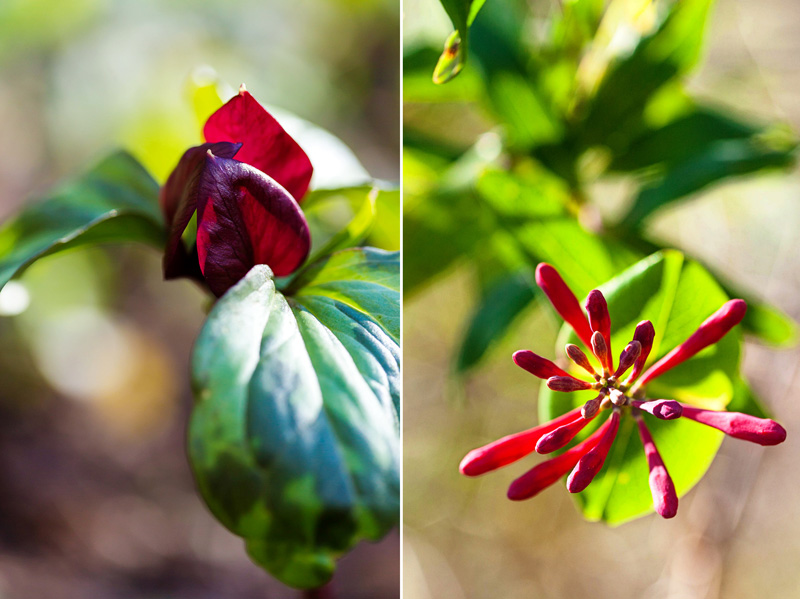
ORANGE – Speaking of plants that are great for hummingbirds, jewelweed provides a beautiful source of nectar. It’s also known as spotted touch-me-not, due to the explosion its seed creates when touched. (That’s also why its genus is Impatiens, because the seeds are “impatient” to be released!) Not to worry–it’s a very gentle explosion. You’re highly unlikely to put an eye out.
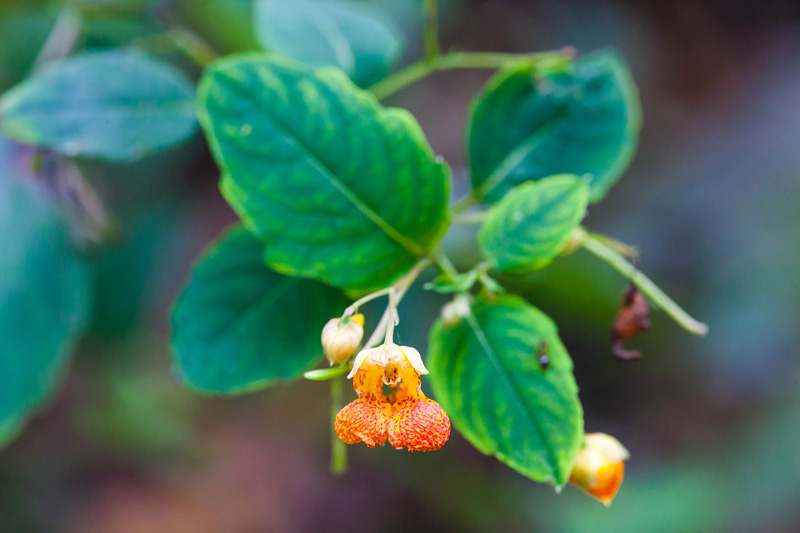
YELLOW – There’s nothing like the blanket of wood poppies (left) that hugs the ground on the Old Forest Loop. In addition to being beautiful, they provide nectar for pollinators and seeds for chipmunks. We also have a small population of large-flowered bellwort (right). Their populations have declined in many forests because of deer browse, but luckily that’s one management issue we do not face!
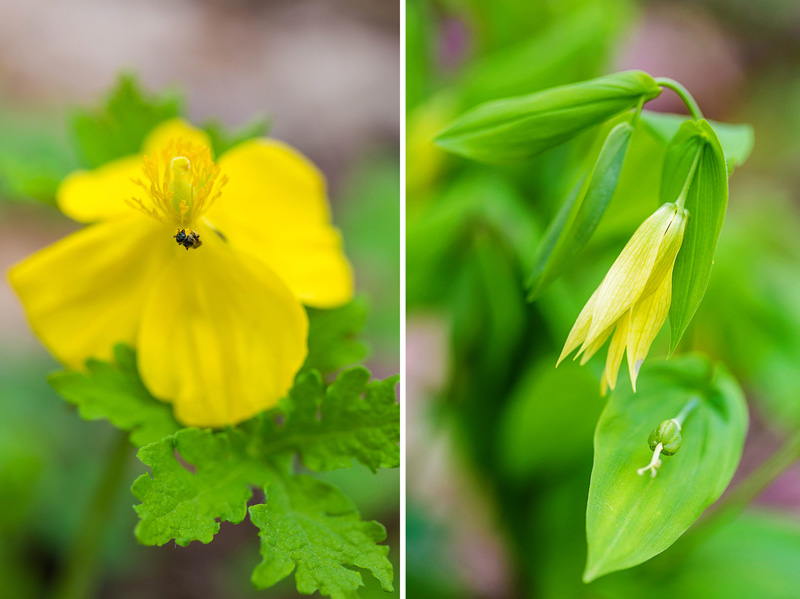
GREEN: The flowers of early meadow-rue are actually tiny yellow and purple strands, but for most of the time this plant is visible, its unfolding green leaves look like tiny flowers. Its foliage is delicate and fern-like.
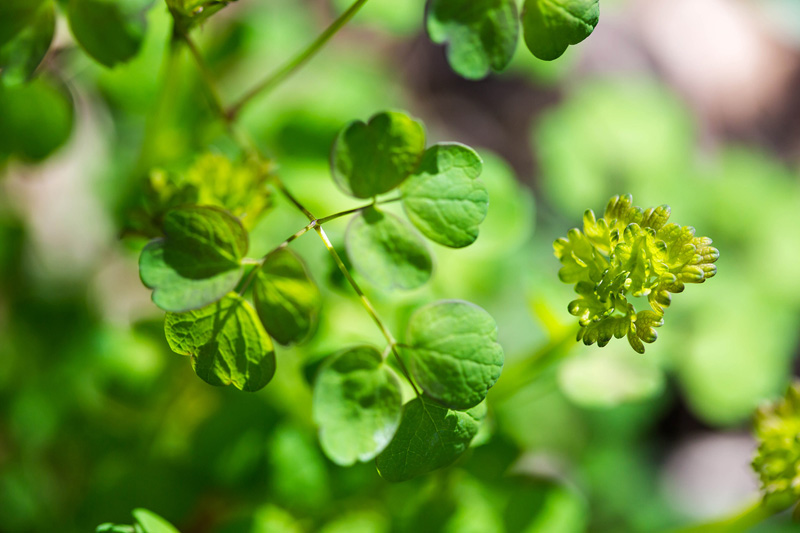
BLUE – Narrow-leaved blue-eyed grass is a member of the iris family with leaves that look like grass. It’s the only plant in the iris family found in the park.
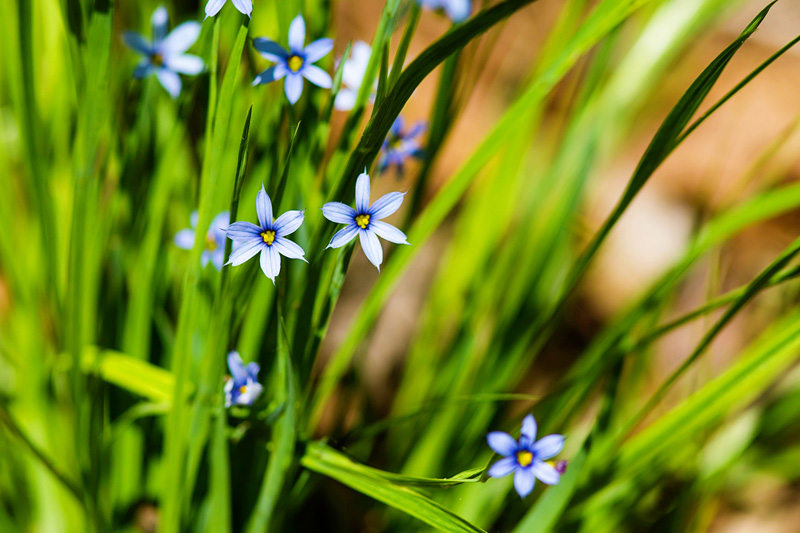
INDIGO – Many of our most beautiful wildflowers are a pale lavender hue (which may or may not actually correspond to indigo!). To the left is Jacob’s ladder, named for the ladder-like arrangement of its leaves on the stem. To the right is woodland phlox, which attracts showy pollinators. The flowers have such long tubes that they can only be fertilized by long-tongued insects like the Eastern tiger swallowtail, but other insects still harvest pollen from the front of the tube.
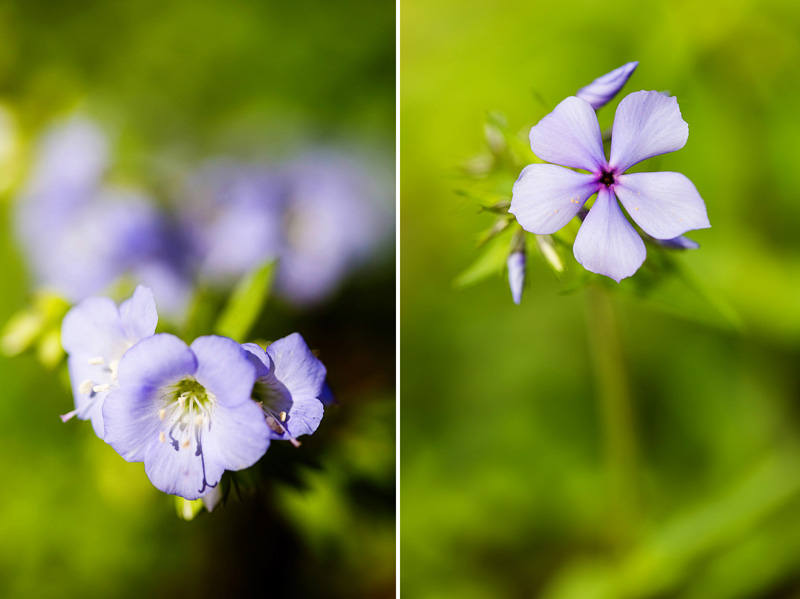
VIOLET – This one was obvious: the common violet! It’s one of two species of violet in the Old Forest, the other being the downy yellow violet. The common violet also has a subspecies with purple and white petals, and if you’re lucky you might find a spot where they occur together.
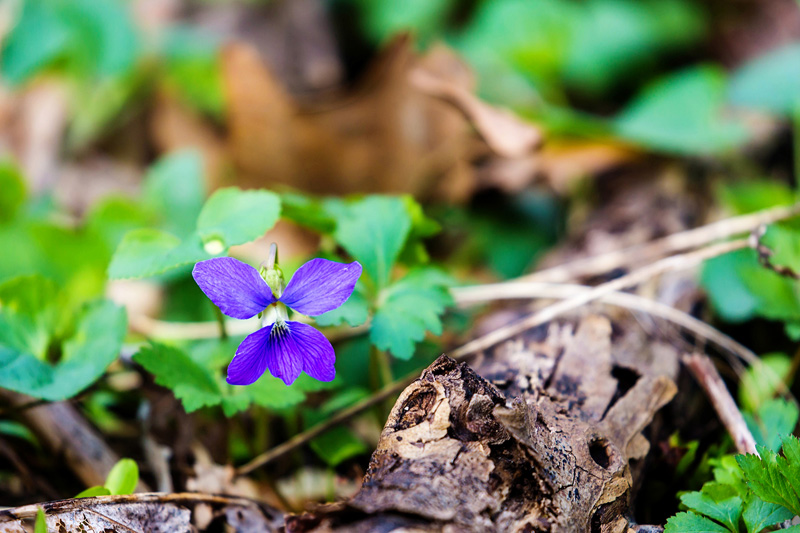
Want to learn more? You can find a searchable guide to all the plants of the Old Forest on iNaturalist.



